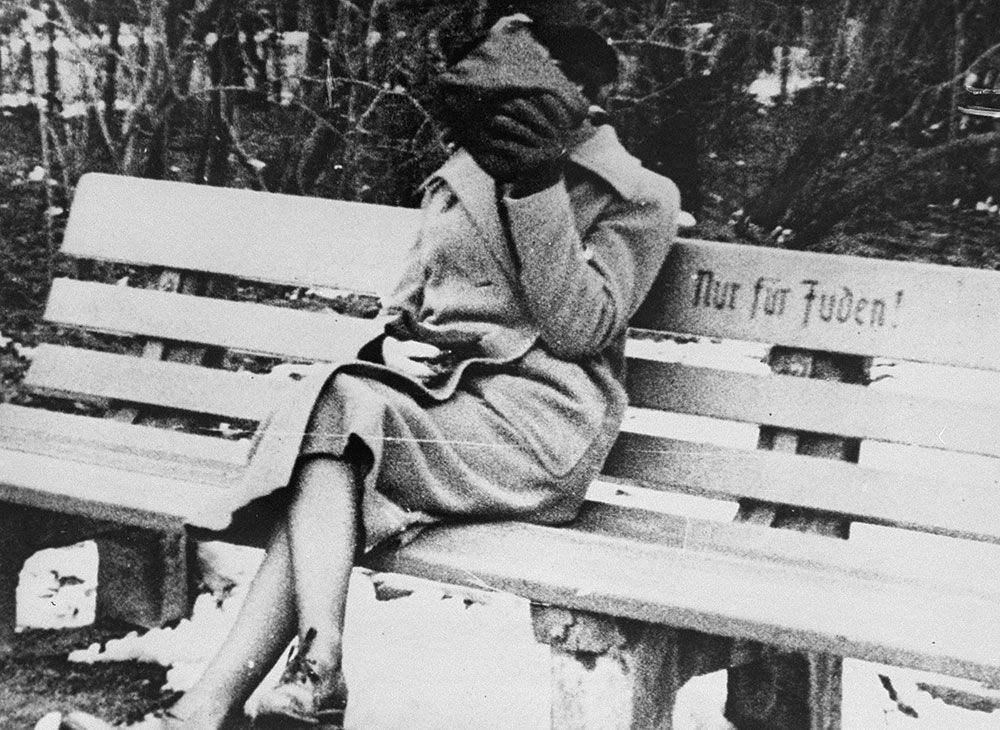The purpose of this activity is to help students learn about responding to genocide. In order to do so, students will divide into groups and research one interviewee from the Museum’s Voices on Antisemitism series in-depth and present their research to the class using one of the options listed below.
Christopher Browning
 Historian Christopher Browning has written extensively about how ordinary Germans became murderers during the Holocaust. Listen to Browning explain why examining the perpetrators' history matters. Learn more
Historian Christopher Browning has written extensively about how ordinary Germans became murderers during the Holocaust. Listen to Browning explain why examining the perpetrators' history matters. Learn more
Father Patrick Desbois
 In 2004, Father Patrick Desbois set out across Ukraine to locate the sites of mass killings of Jews during the Holocaust. He is motivated in part by the memory of his own grandfather, a French soldier who was deported to Ukraine by the Nazis. Learn more
In 2004, Father Patrick Desbois set out across Ukraine to locate the sites of mass killings of Jews during the Holocaust. He is motivated in part by the memory of his own grandfather, a French soldier who was deported to Ukraine by the Nazis. Learn more
Gregory S. Gordon
 Gregory Gordon helped to prosecute the landmark "media" cases in Rwanda–where hate speech, broadcast over the radio, was directly linked to the genocide of the Tutsi people. Gordon believes that the lessons learned in Rwanda could be applied in Iran and elsewhere, to prevent these incitement tactics from taking hold. Learn more
Gregory Gordon helped to prosecute the landmark "media" cases in Rwanda–where hate speech, broadcast over the radio, was directly linked to the genocide of the Tutsi people. Gordon believes that the lessons learned in Rwanda could be applied in Iran and elsewhere, to prevent these incitement tactics from taking hold. Learn more
John Mann
 Although there is not a single Jewish person living in the area British Member of Parliament John Mann represents, he believes it absolutely proper that he serves as chair of the British Parliamentary Committee Against Antisemitism. Learn more
Although there is not a single Jewish person living in the area British Member of Parliament John Mann represents, he believes it absolutely proper that he serves as chair of the British Parliamentary Committee Against Antisemitism. Learn more
Sayana Ser
 Sayana Ser was born in Cambodia in 1981, two years after the fall of dictator Pol Pot. Today, Ser works to help her country heal from that genocide. As part of that effort, Ser decided to translate The Diary of Anne Frank into her native language of Khmer. Learn more
Sayana Ser was born in Cambodia in 1981, two years after the fall of dictator Pol Pot. Today, Ser works to help her country heal from that genocide. As part of that effort, Ser decided to translate The Diary of Anne Frank into her native language of Khmer. Learn more
Methodology
- Divide students into groups.
- Assign a podcast episode to each group.
- Each group will research the person assigned to them, paying close attention to what he or she is doing in a contemporary sense in response to genocide.
- Students should consider who the individual is, where he or she lives, what his or her motivation is in responding to genocide, and what methods this person uses to carry out his or her work.
- Once the groups have gathered the necessary information, they should present what they have learned about the individual assigned to them using any of the methods below:
- Design a poster on the person including information on who he or she is and how this person has responded to genocide.
- Write a newspaper article “reporting” on the individual and what he or she is doing in response to genocide.
- Create a profile on a website instructing others how to respond to genocide using the methods the individual has described.
- Simulate a press conference.
Recommended Research Resources
Museum Resources
- Genocide Prevention (A website where you can watch eyewitness testimony, find out who is at risk today, write your own pledge to take action, and much more.)
Holocaust Encyclopedia articles:
- Antisemitism
- Genocide Timeline
- Incitement to Genocide in International Law
- Rwanda: The First Conviction for Genocide
- The Crime of Genocide
- What is Genocide?
Additional Online Resources Related to Responding to Genocide
- Documentation Center of Cambodia (external link) (Documents the crimes and atrocities of the Khmer Rouge era by recording and preserving the history of the Khmer Rouge regime.)
- Omid: A Memorial in Defense of Human Rights (external link) (An electronic database of human rights violations in Iran dedicated to the victims of the Islamic Republic since it was established in 1979.)
- Yahad-In Unum (external link) (Leads research about the Jewish victims of the Einsatzgruppen in Eastern Europe during the Second World War.)

